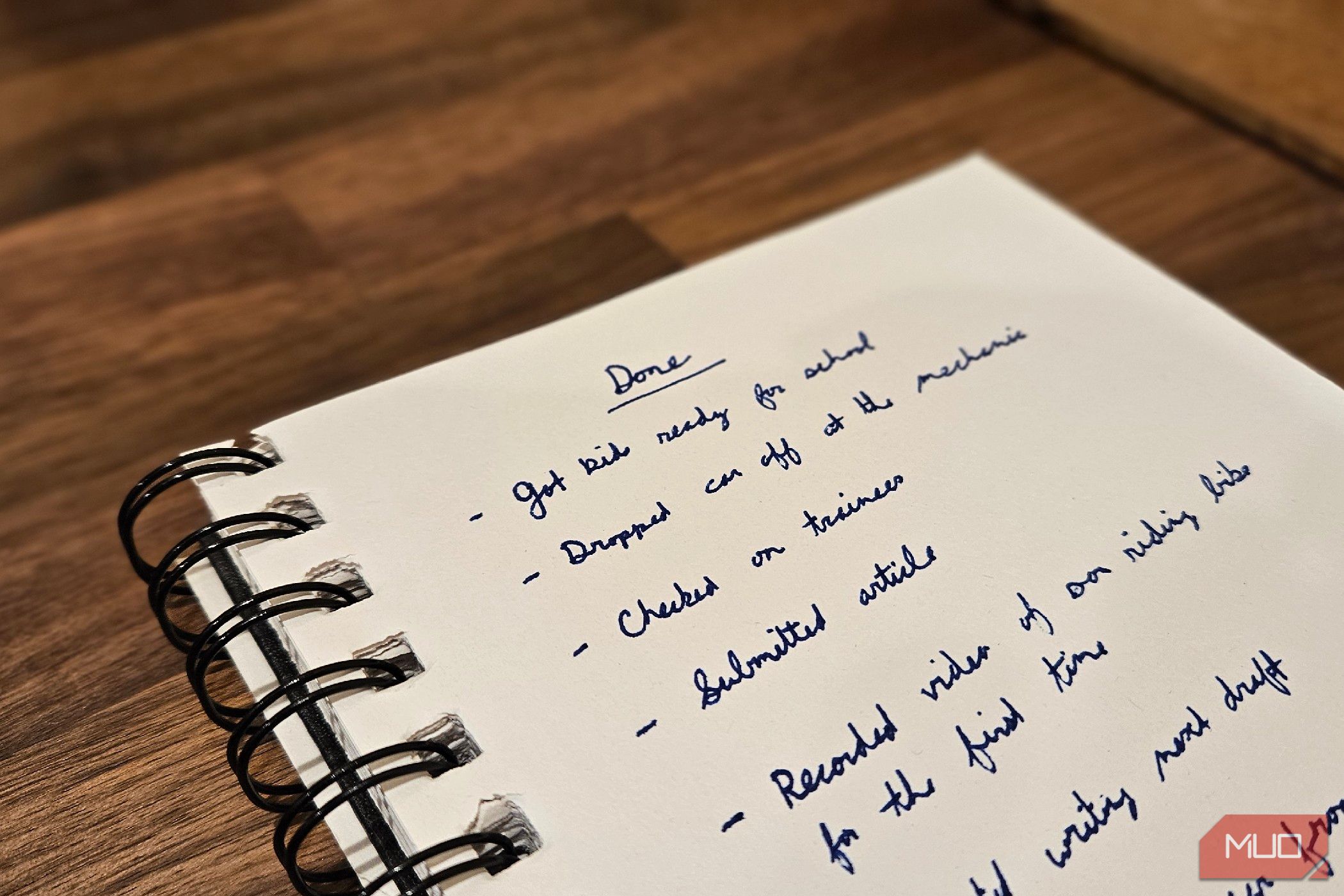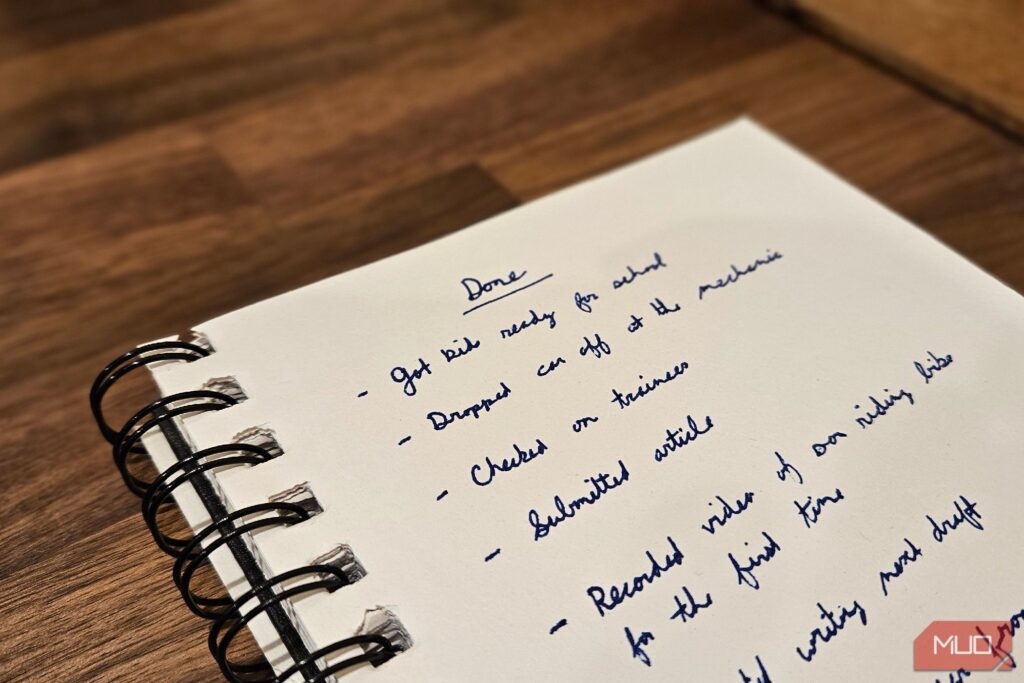
Key Takeaways
- Instead of keeping a to-do list, which can feel overwhelming and depressing, try creating a “done list” to focus on accomplishments instead.
- You can use any to-do app, or stick to pen and paper, to start your list.
- Keep it positive. Include small achievements to remind yourself of the steps you’re taking toward the kind of life you want to live.
I’ve tried keeping a to-do list, but I don’t stick with them for long. Managing the list feels like a to-do in itself. When I heard about keeping a “done list” instead, well, that sounded like a game changer!
How a Done List Beats a List of To-Dos
To-do lists can be a bit depressing. The flip side of telling us what needs doing is constantly being reminded of what we haven’t done. When we check an item, rather than the satisfaction that comes with accomplishing something, we’re left with a visual of what needs doing next. Even sticking to a weekly review of your to-do list can leave you feeling like you aren’t making the progress you wish.
A “done list” flips this concept on its head. Rather than noting what tasks lie ahead, you jot down those you have already completed. You’re creating a list of your achievements without making a record of the tasks you have yet to do or those you decided to skip. This has the benefit of showing you how much you’ve accomplished, leaving you feeling spiritually rejuvenated and, ironically, possibly motivated enough to get more done.
As many of us know, it’s hard to be productive when we feel either discouraged or overwhelmed. Keeping a done list can be part of your solution.
How to Get Started With a Done List
While I do see an app called Done List in the Play Store, this isn’t the sort of thing you need special software for. You can keep track of a done list, ironically, using any to-do list app you want. If you’re using Microsoft To Do, Google Tasks, or Todoist, the process is the same. Create a new list, and instead of adding items that need doing, simply add the ones you’ve already done.
You don’t even need a dedicated to-do app for the job. Since I’m a heavy Samsung Notes user, I created a note there instead to keep track of what I’ve done. Frankly, you can stick to pencil and paper if that works better for you.
Tips and Tricks for Success
There is no one way to keep a done list, nor is there necessarily a right way or a wrong way to go about it. Still, here are some guiding principles to keep in mind.
1. Make Your Done List Accessible
You don’t want to forget to keep up with your list. If you’re monitoring achievements on your phone, you can place the app directly on your home screen. You may find it most helpful to keep a notepad at your office desk or bedside table, to serve as its own visual reminder. Keeping a list can serve as a journaling habit before bed.
2. Focus on the Positive
If you’re trying to avoid eating certain foods, such as sugary snacks, you have the option to write down whenever you cave and decide to have a donut. This is something you’ve done, after all. But if you keep a record of lapses or mistakes, there’s a decent chance you’ll only end up discouraging yourself. Better to focus on the good and forget the bad.
3. Lower Your Standards
If you’re trying to exercise more, you don’t have to only write down the times you make it to the gym or roll out your yoga mat. You can take note of the trips you made to the mailbox or a decision to walk during a phone call instead of taking it at your desk. Seeing a list of successes can encourage you to continue making those kinds of decisions.
4. Measure Achievements With Numbers
You can further track progress by including numbers. You can say “Push-ups done: 25” or “Biked for 30 minutes.” If you’re a freelancer or work an hourly wage, you can monitor your income this way, with “Money earned: $120.” That said, if you find yourself feeling depressed by numbers not being as high as you like, better to leave them out.
If you’re digging the idea of a done list, you can pull out a piece of paper right now and, for the first item on your list, put down “Felt inspired to start a done list.” Getting started is often the hardest part, and guess what? You just nailed it!



